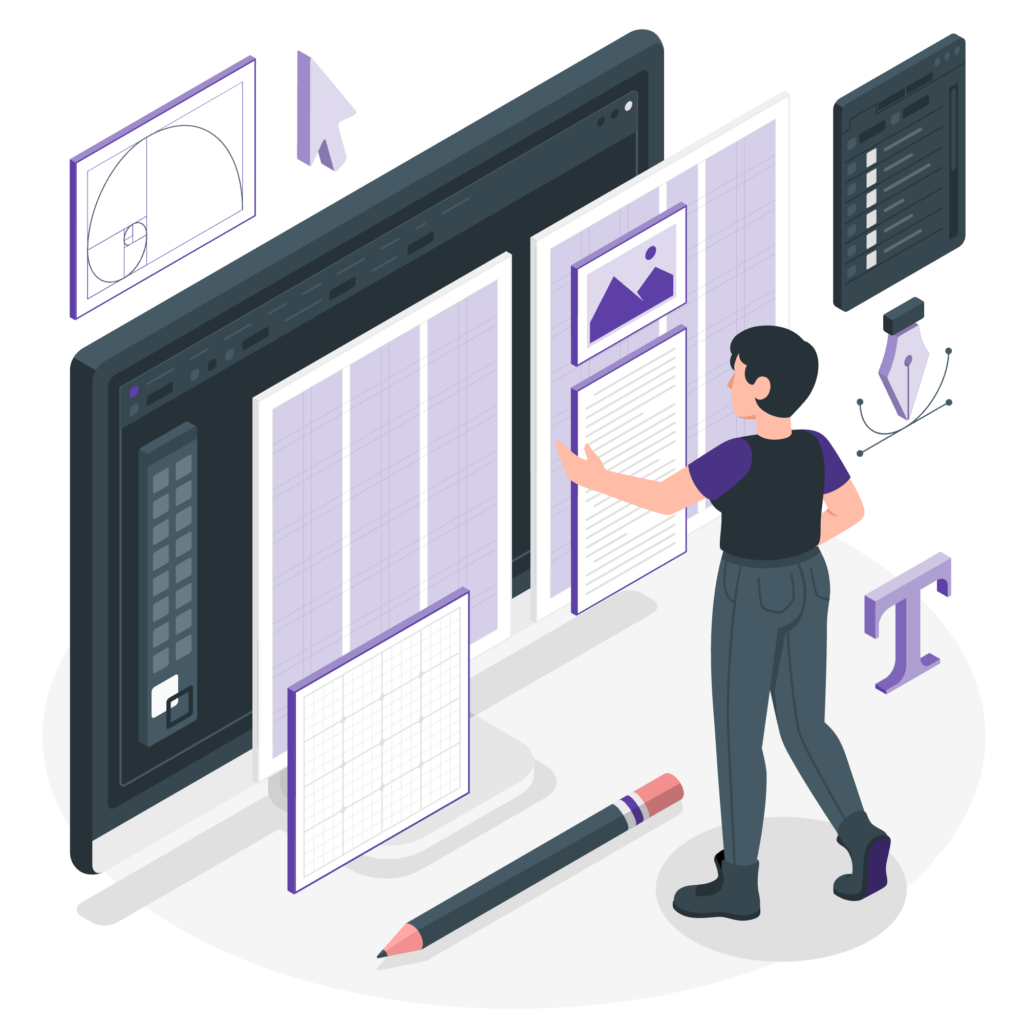Cultivating productivity and mindfulness every day
How to cultivate productivity and mindfulness every day?
Mindfulness: a modern fad or a practical tool for enhancing daily life?
Despite its ancient roots, some modern men and women still dismiss mindfulness as another fleeting trend, irrelevant in the practical world of business, family, and education.
Others may view it as a complex practice, reserved for the serene few who have hours to dedicate to meditation.

I believe these assumptions are missing the bigger picture. Mindfulness is actually a simple, accessible skill that can be woven into the fabric of our hectic schedules to foster clarity, resilience, and productivity.
I am writing this article because within my own life, mindfulness practices have greatly reduced my overwhelm as much as being organized with my tasks and time. It really is the yin to the yang of organization and motivation.
This is my attempt to debunk the myths surrounding mindfulness and show practical ways to integrate it into your busy day, enhancing your effectiveness and well-being especially if you are a neuro-divergent individual.
What is mindfulness?
Imagine you’re the manager of a busy restaurant, it’s your job to keep an eye on everything—from the kitchen to the customers. Mindfulness is a bit like being that manager but in daily life. It means paying full attention to what’s happening right here and right now, without getting sidetracked.
Here’s what being mindful involves:
- Noticing: It’s like being the coach of your own team. You notice what’s happening with you—your thoughts, feelings, and everything around you in the present moment. Are you feeling rushed? Is your mind buzzing with the to-do list while you’re playing with your kids? Ask yourself what you are doing right now and what you need?
- Not Judging: Suppose you realize you’re feeling overwhelmed about a big project that is coming up on your schedule. Instead of getting upset with yourself for feeling this way, you simply say, “Okay, I’m feeling overwhelmed,” and let that feeling be there without any self-criticism. It’s like watching cars pass by outside—you see them, but you don’t need to run out and stop them.
- Being present: Instead of your mind wandering to that difficult client call you had or the school meeting you need to attend tomorrow, you keep your mind focused on what you’re doing in the current moment. Perhaps you concentrate on the smell of the dinner you are making or really listen to the story your child is excitedly telling you about their day.
Mindfulness may be a practice that has ancient roots but in today’s world, it’s a tool used by people all around the world, including busy moms and entrepreneurs like you, to help manage the amount of responsibilities and tasks that are on our plates in our daily work or home life. Most importantly, the benefits of mindfulness it can help you handle stress, stay organized, and enjoy moments with your family and those you love more fully.
The Science behind mindfulness
Research shows that practicing mindfulness can tweak your brain, turning down the parts that deal with stress and turning up those that help you concentrate and give you positive emotions. This doesn’t just reduce anxiety—it makes you a more effective thinker and leader, able to handle both business strategies and family plans.

There have been studies that claim that mindfulness and mindfulness meditation actually help increase activity in the pre-frontal cortex, or in the area of the brain that helps you reason and problem-solve, giving you more control over parts of your thoughts, including the ones that can cause anxiety and stress.
Mindfulness in daily life
Practicing mindfulness can be about always being calm and collected, but the flip-side actually helps you fully participate in your life. Whether you’re sorting out your business accounts, preparing dinner, or reading bedtime stories, the practice of mindfulness lets you truly engage with the task at hand, making everyday actions mean more in the moment that they happen.
As a mother, a woman and an entrepreneur, I am naturally driven and motivated to hit my next goal, or to celebrate a birthday with my children. Mindfulness has helped me really see the true values in my life, improved my mental health and enjoy the parts of my life that bring me joy. I’d love to help you do the same thing.
Productivity and mindfulness
As a busy parent, businesswoman and neuro-spicy individual, you may think that you are a lost cause when it comes to mindfulness. When you are frantically running from one task to the next, sometimes skipping lunch and eating at your desk so you can get your kids to dance practice at 5:15, is it even POSSIBLE to fit mindfulness into your day or work environment?

Let’s put it to you this way, if your car was out of gas, would you find the time to fill it up?
If your child needed help with a friend who hurt their feelings, would you tell them you were too busy to talk to them?
The same is true with mindfulness practice. It can actually HELP you be more productive and think more clearly, with better focus, no matter how many things are on your task list.
Here’s how mindfulness training specifically helps with productivity:
- Clears the Mental Clutter: Mindfulness is like having a broom for your brain. It helps sweep away the distractions and worries that aren’t helpful to you right now. With a clearer mind, you can focus better on what is right in front of you, whether it’s finishing a work presentation or planning your child’s birthday party.
- Reduces Stress and Burnout: Just like a computer can overheat if too many programs are running at once, your brain can get overwhelmed when you’re too stressed, let alone your whole body. Mindfulness cools down your brain by calming your thoughts. This not only makes you feel better but also can stop you from burning out, allowing you to remain energized to tackle more of your tasks.
- Enhances Decision-Making: When you’re mindful, you’re not just reacting on autopilot. Instead, you’re more aware of what’s happening around you and can make decisions based on what’s really important. This can be a game-changer when you need to decide which tasks to prioritize, what to delegate, or how to handle a tricky situation with a client.
- Improves Time Management: By training your mind to focus on the present, mindfulness helps you become more efficient because you are able to complete things faster with more focus. You might notice that you’re not wasting time worrying about what might happen next week, or dwelling on a mistake from yesterday. More time focusing on now means more gets done, and done well.
- Strengthens Relationships: Whether it’s with your kids, partner, or business colleagues, being present can make a big difference. Mindfulness helps you listen better and react more thoughtfully. Stronger relationships can lead to smoother days both at home and in your business.
Here is some more literature about mindfulness helps productivity through more sustainable work.
What can happen if we aren’t mindful?
You can understand the importance of mindfulness from a high level, but I wanted to dive a little deeper into what can happen if we aren’t mindful.
I believe that many of us can relate to a lot of these symptoms, which is why I want to share them with you. If you can relate to 2 or more of these, you may benefit from starting with some mindfulness practices.
Mental overload 🤯
Just like a computer slows down when too many applications are open, your mind can become bogged down when you try to juggle too many thoughts at once. This mental clutter can make it extremely hard to focus, especially if it is compounded by ADHD, leading to forgotten commitments and scrambled priorities. Imagine trying to prepare for an important business meeting while also keeping track of your child’s soccer schedule—without the ability to slow down and focus on each task at a time, the details can easily slip through the cracks.

Physical stress 💪🏼
Often, we ignore the early warning signs of stress, but over time, these can manifest physically. You might find yourself struggling with insomnia, experiencing frequent headaches, or feeling a constant, unexplainable fatigue. It’s like pushing a shopping cart with a stuck wheel—no matter how hard you try, it will just add to your exhaustion and frustration.
I had this happen to me over 2 years ago when I had heart palpitations and passed out in my kitchen, it was a direct result of chronic stress and overwhelm and forced me to take some drastic measures and learn how to maintain my task load and release the stress.
Emotional spillover 🥺
Without a way to circumvent and process stressful situations, emotional reactions can become much more exaggerated. Minor setbacks might provoke undue anxiety or irritation, affecting your interactions with your family and colleagues. It’s as if your emotional buffer is gone, and every little bump in the road feels like a major obstacle.
Have you ever noticed at the end of the day your children or your spouse acting grumpier than usual, or have you noticed that little things that wouldn’t have bothered you at breakfast now drive you crazy? Someone eating too loud? Your older kid starting a fight with their younger brother? Your hubby always in the WAY in the kitchen?
Now add more stress to that and see what happens.
Missing the moments ⏳
Almost worst of all neglecting the ability to be mindful means you might brute force your way through your days without truly experiencing them. Important personal moments—like watching your child learn how to on their own or the sense of accomplishment from a well-executed project at work—can pass by unnoticed. Life can start to feel like a series of tasks that must be done, rather than a series of moments to be enjoyed.
Multitasking madness 🤹🏼
One of the greatest theifs of productivity is the one thing that we find ourselves doing TO be more productive, and that is multi-tasking. The act of multi-tasking, or doing more than one thing at the same time, has actually been found to make us less productive at the end of it all. When you are making a phone call, at the same time you are ordering something from an online store, while also watching your toddler color on the floor of your office. At least one of those tasks is going to either be done incorrectly, or end up being crayons on your wall. Being mindful of what you are focusing on will allow you to single-task on one thing at a time and probably still get everything done faster.

I talk more about the multi-tasking myth in this article
Mindfulness in action 🎬
Try this simple mindfulness exercise next time you’re overwhelmed: Pause for a minute, take five deep breaths, and focus only on the air moving in and out of your lungs. Notice how it feels cooler when you breathe in, and warmer when you breathe out. This quick break can help reset your mind and improve your focus.
Mindfulness and meditation practices
With a much better idea of how mindfulness is helpful to you, I’ve compiled a list of possible easy and effective mindfulness practices that can be used at almost any time of the day to help calm the mind and help you focus. Some of them may be obnoxiously obvious, but sometimes it is the simplest and obvious practices that are the ones we don’t even think about trying.
Breathing Exercises One of the simplest and most popular mindfulness practices is focused breathing. This can be as straightforward as taking a few deep breaths before a big meeting or while waiting in the carpool line, or if you work remote like me, while waiting to get onto a Zoom call. You breath in for a count of 3, hold your breath for 3, breathe out for a count of 5 slowly. After 3 of these, your heart will beat slower, your head will be clearer and you will be able to concentrate better on the conversation or task at hand. <<asdf breathing exercise image??
Meditation: Meditation practice is a great mindfulness option that doesn’t need special equipment or lots of time—just a few minutes each day can make a significant difference in focus and concentration.
Apps like Headspace or Calm provide guided meditations that can help beginners get started. Whether it’s a 10-minute session in the morning or a quick five minutes while sitting in your office, regular meditation can enhance your focus and reduce stress.
I use this when getting ready for bed at night, or if I’m having a particularly stressful day.

Yoga Yoga combines physical postures, breathing exercises, and meditation, making it a comprehensive mindfulness practice. It not only helps in reducing stress but also improves physical health. Classes can range from gentle to vigorous, and many are designed specifically for busy professionals who need a quick mental and physical reset.
Walking Instead of just walking as a means to get from point A to point B, turn it into a mindful practice. Pay attention to the sensation of your feet touching the ground, the rhythm of your steps, the sounds around you, and the feeling of the air on your skin. This can be especially refreshing during a busy day and is easy to incorporate, whether you’re walking to your next meeting or around your neighborhood.
I walk with my dog every morning (if you follow my social media at all, you have seen him many times) and on most days when I pick up my youngest from school. It helps force a break, gets exercise and sit down with my tasks ready to work.
I found some more exercises, specifically for ADHD individuals listed here.
Alternative mindfulness practices
I want to include some other practices in here that I have either heard about or tried myself as they may be helpful to those who have a bit more time, or need more options.
Journaling Taking a few minutes to write down your thoughts reflect on your day, jot down what you’re grateful for, or simply document the moments you want to remember.
Mindful Eating Turn your meals into an opportunity for mindfulness by eating slowly and without distractions. Focus on the flavors, textures, and smells of your food.
Crafts and Creative Activities Engaging in creative activities like drawing, painting, or knitting can be wonderfully meditative. I did this when my kids were younger creating cute crochet hats for them.
Tech-Free Time Set aside time each day where you disconnect from all electronic devices. This can be during dinner, the first hour after you wake up, or right before bed. (Ideally, all three)
These mindfulness practices are not only popular but also versatile, fitting into various schedules and lifestyles, especially for a busy entrepreneurial mother looking to incorporate mindfulness into her hectic routine.
Finding time for mindfulness practices during a busy day
Even with all of these mindfulness possibilities, as a busy entrepreneurial mom, it can feel like every minute of your day is accounted for. However, integrating mindfulness into your routine doesn’t need to be time-consuming or cumbersome.

- First of all, Start Small. Begin with just five minutes of mindfulness a day. It could be a few deep breaths before you start your car in the morning or a quiet moment of reflection before you sleep. Remind yourself to do it by adding it as a habit to your morning routine, or leave a note to yourself on the steering wheel of your car. These small practices can build a foundation for a more mindful lifestyle without overwhelming your schedule.
- The moments between activities (transition times) are perfect opportunities for mindfulness. These could be the minutes spent waiting for the coffee to brew, standing in line at the grocery store, or waiting for your computer to start up. Use these snippets of time to practice mindful breathing or to simply observe your surroundings and sensations without judgment.
- Schedule It Just like you schedule meetings and family appointments, pencil in your mindfulness time. It could be a 10-minute slot for meditation or yoga during your lunch break or right after dropping the kids at school. Treating mindfulness time with the same importance as other appointments can help ensure you commit to it. If it’s important, you put it in the calendar! 😀
- Mindful Habits Choose routine tasks to perform mindfully each day. Whether it’s doing the dishes, folding laundry, or organizing your desk, focus fully on the task at hand. Notice the details of your actions, the sensations, and even the thoughts that arise, bringing your focus back to the task whenever it wanders.
- Mindfulness can be a family activity. Spend a few minutes each evening discussing what each person was grateful for that day, or practice breathing exercises together if your kids will do it (getting mine to breath? Not yet… maybe when they are older). Not only does this set a great example for your children, but it also enhances your own practice.
- Use technology to your advantage by setting reminders on your phone or using apps that prompt mindfulness exercises. These tools can help you stay on track and make mindfulness a regular part of your day. I know the apple watch does this periodically, but you can also just set an alarm.
A final word on mindfulness and daily productivity
Finding time for mindfulness doesn’t require major lifestyle changes. Instead, it’s about making small adjustments and using moments already available in your day more intentionally. By integrating mindfulness in these simple ways, you can reduce stress and enjoy a more fulfilling life amidst the bustle of entrepreneurship and motherhood.

So that is my deep dive on mindfulness and it’s importance in productivity. If you’re anything like me—a busy mom and entrepreneur juggling a million things at once—you might think adding mindfulness into the mix is a bit much. But trust me, it’s not about sitting silent for hours in a zen garden; it’s about finding small moments throughout your busy day to just breathe and be present.
Mindfulness is our secret superpower. It helps clear the fog during chaotic days and brings a sparkle to the ordinary moments, like really hearing the excitement in your child’s voice over a small win at school or feeling the satisfaction of nailing that client presentation.
So, let’s start small. Take a deep breath in the morning rush, feel the sun on your face for a minute, or just enjoy the quiet of your house before the day kicks off. It’s these little nuggets of calm that can transform our hectic days. Here’s to making mindfulness a natural part of our bustling lives and to enjoying the journey along the way. Cheers to living fully, laughing often, and loving the little moments!
If you like what you have read here, or want more help achieving this balance in your work or in your life, check out my productivity workbook or look into my Simplify & Conquer service where we walk through your business processes in 90 minutes and you get personalized actionable steps to reduce the chaos and simplify your systems.
Some more helpful blog posts are
- Managing Distractions with ADHD
- Streamline Your Day: How to save time in daily life
- Airtable for ADHD
- Ultimate ADHD system with ClickUp and Airtable
And finally, if you are interested in purchasing any of my ClickUp or Airtable Templates, designed to take you from neuro-spicy overwhelm to organized kick-ass busienss owner, check out everything here on my EVERYTHING page.
The only way to learn something is to USE it!
Grab my FREE Productivity Workbook below
Cultivating productivity and mindfulness every day Read More »






































 Routines are your friend…. so are habits, especially when you have ADHD brain. This doesn’t mean you have to always follow the schedule… but it does allow you to pay attention to the pressing matters
Routines are your friend…. so are habits, especially when you have ADHD brain. This doesn’t mean you have to always follow the schedule… but it does allow you to pay attention to the pressing matters










 Basically, it’s a concentrated effort tailored to you, the client. It’s an opportunity to step away from the daily grind and immerse yourself in a structured and supportive environment designed for intense focus on your most pressing projects and goals.
Basically, it’s a concentrated effort tailored to you, the client. It’s an opportunity to step away from the daily grind and immerse yourself in a structured and supportive environment designed for intense focus on your most pressing projects and goals.
















